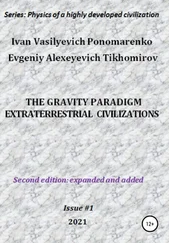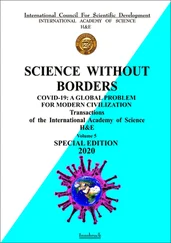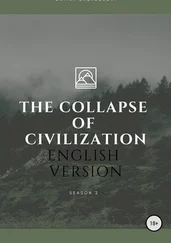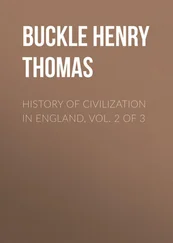1 ...7 8 9 11 12 13 ...32 The worldview of the ancient Hebrews differed dramatically from that of all the other civilizations of the ancient world. It is a “mechanistic” view of a universe that operates by discoverable natural laws, not random chance. Time is understood to be linear with both a beginning and an end not an endless repetition of cycles. There is meaning and purpose for both history and the individual. All this is known by human beings through reason. Because there are moral absolutes implicit in the universe, and because human beings possess a free will, individual choices and actions influence the flow of history. When blended with the worldview of the ancient Greeks (see Chapter 2) and later certain Germanic traditions (see Chapter 4) the result is what is called Western Civilization.
The first of the later empires to arise as the invasions from the north subsided was Assyria. By c. 750 BC, the Assyrians had conquered the whole of Mesopotamia. The northern Kingdom of Israel fell to the Assyrians in 722 BC. The Assyrians scattered many of the Hebrews throughout their empire. Thus, the ten northern Hebrew tribes that made up the northern kingdom of Israel after the division of Solomon's kingdom disappeared as they blended in with the inhabitants of the areas in which they settled. The Assyrian Empire expanded until it eventually included Syria, Phoenicia, and Egypt. It contributed nothing of value to civilization, and its people are remembered primarily for their extreme cruelty.
The Assyrian capital of Nineveh was captured and burned by the Chaldeans in 612 BC. The Chaldean, or Neo‐Babylonian, Empire succeeded the Assyrian Empire in Mesopotamia. The empire reached the height of its power under King Nebuchadnezzar II (634–562 BC). Nebuchadnezzar II was a great builder. He transformed the city of Babylon into one of the most splendid cities of the ancient Near East. “In addition to its size,” Herodotus wrote, “Babylon surpasses in splendor any city in the known world.”
Nebuchadnezzar II invaded and conquered the southern kingdom of Judah in 597 BC. After taking Jerusalem, he deposed Jehoiakim (c. 635–598) and placed on the throne, a new king of his own choosing, Zedekiah (b. 618). When Zedekiah revolted and made an alliance with Egypt, Nebuchadnezzar II invaded and laid siege to Jerusalem. After an 18‐month siege, Jerusalem fell. The city and Solomon's Temple were razed to the ground. Zedekiah and several thousand prominent citizens were taken captive to Babylon. Zedekiah died in prison, but those who were taken captive with him endured 70 years of exile in Babylon. The period of the “Babylonian Captivity” became a defining moment in Jewish history.
The Chaldean Empire, impressive as it was, lasted less than a century. In 539 BC, a force of Medes and Persians led by a brilliant military strategist, Cyrus the Great (r. 559–530 BC), brought the curtain down on the Chaldean Empire with the capture of Babylon. Cyrus issued a decree allowing the Hebrew exiles to return to Judah. Many made “the return to Zion” over the next 110 years, where they enjoyed a measure of autonomy under Persian rule. When Cyrus' son Cambyses died in 522 BC, having added Egypt to the empire founded by his father, all of western Asia was under Persian rule. Darius the Great (550–486 BC) abandoned any further conquest, concentrating instead upon transforming the vast conquests into what many call the world's first modern empire.
Persia under Darius was the first empire to be administered by a royal bureaucracy. Darius divided his empire into provinces under the rule of royal officials known as “satraps.” Commerce was encouraged by a state‐issued coinage, an idea borrowed from the Lydians. Lydia was a wealthy kingdom in west‐central Anatolia (modern Turkey). Many believe that the Lydians were the first to mint coins. Cyrus the Great conquered Lydia in 546 BC. Along with the standardized coinage went a common system of weights and measures. A system of roads, including the Royal Post Road, which stretched from Ephesus on the Aegean Sea to Susa near the Persian Gulf, encouraged commerce and unified the empire. A canal linking the Red Sea with the Nile River, originally dug by the Egyptians but since allowed to fill with sand, was reopened. Aramaic became the official language throughout the empire. Zoroastrianism, a dualistic religion that stressed ethics while rejecting blood sacrifices, polytheism, and temple worship, became a universal faith, transcending both the state and the people that gave it birth, thus further unifying the Persian Empire.
The expansion of the Persian Empire through Asia Minor to the Aegean coast brought the Persians into contact with the Greeks. The so‐called Persian Wars between 499 and 479 BC, and the subsequent conquest of the Persian Empire by the youthful Alexander the Great of Greece, spread Greek culture throughout the ancient world from Egypt and Greece in the west to the Indus River in the east. It remained for the Romans to complete the mission by unifying the whole of the Mediterranean world, and then pass both the Judeo‐Christian and Greco‐Roman traditions on to Europe after the fall of the Roman Empire in the West in AD 476.
1 Dell'Amore, C. (2009). Nefertiti's Real, Wrinkled Face Found in Famous Bust? Science News. http://esciencenews.com/sources/national.geographic/2009/03/31/nefertitis.real.wrinkled.face.found.famous.bust(accessed 18 October 2019).
2 ‘Fake' claims over Nefertiti bust (2009). BBC News. http://news.bbc.co.uk/2/hi/entertainment/arts_and_culture/8038097.stm(accessed 18 October 2019).
3 Hammurabi's Code (2019). Hammurabi’s Code: An Eye for an Eye. http://www.ushistory.org/civ/4c.asp(accessed 18 October 2019).
4 Hawass, Z. (2019). Chronology of Ancient Egypt. http://www.guardians.net/hawass/chronology.htm(accessed 18 October 2019).
5 Sutherland, A. (2018). Mysterious 11,000 – Year‐Old Tower Of Jericho: Was World's First Skyscraper A Symbol Of Power Or An Ancient Time‐Keeping Device? Ancient Pages. http://www.ancientpages.com/2018/08/31/mysterious‐11000‐year‐old‐tower‐of‐jericho‐was‐worlds‐first‐skycraper‐a‐symbol‐of‐power‐or‐an‐ancient‐time‐keeping‐device(accessed 18 October 2019).
1 1Approximately four centuries later, around 3100 BC, civilization appeared in the Nile River Valley of Egypt. It then appeared in the Indus River Valley of India around 2500 BC, and in the Huang Ho (or Yellow) River Valley of China about 1500 BC. The spread of civilization in ancient history, and contacts between ancient civilizations is an interesting topic, but beyond the scope of this survey. Dates of events in ancient history are always approximate and vary widely from one source to another.
2 2A city and the surrounding territory controlled by it are commonly referred to as a city-state, kingdom, or city-state kingdom.
3 3The term “Indo-European” refers to a group of languages that originated in the Eurasian Steppes about 6000 years ago.
4 4The cataracts are shallow sections of the Nile River where rocks, small islands, and whitewater rapids make navigation difficult or impossible. There are six cataracts.
5 5The name of the unifier of Egypt is disputed. Some credit Menes, or Scorpion II, rather than Narmer. The consensus appears to be that Menes and Narmer were the same person, and Scorpion II was a king during the pre-dynastic period. The title “pharaoh” was not used for the Egyptian kings until the reign of Thutmose III (c. 1479–1425 BC) during the period of the New Kingdom, or Empire.
6 6The authenticity of the famous Nefertiti bust was called into question in 2009 in a somewhat sensationalized news release by the Swiss art historian Henri Stierlin (Fake claims 2009). Stierlin has since been proven to be mistaken (Dell'Amore 2009).
Читать дальше












